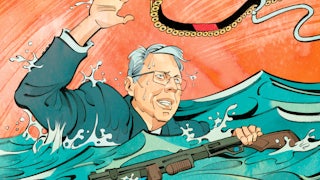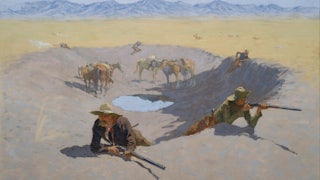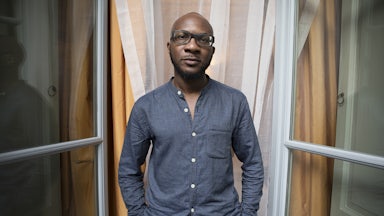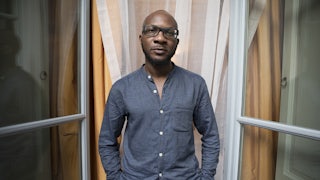If lobbying shops could be Marvel supervillains, the National Rifle Association would surely be right up there in the pantheon, harnessing some new source of infinite energy to wreak havoc hither and yon. The group, originally founded in 1871 to promote improved marksmanship among U.S. soldiers, spent much of the twentieth century as a gun safety and hunting association. But in the mid-1970s, a schism in the NRA’s leadership ranks produced a new focus: The group would be a militant advocate for the individual right to bear arms, and it would push to unseat lawmakers who supported legislation that might impinge in any way on that right.
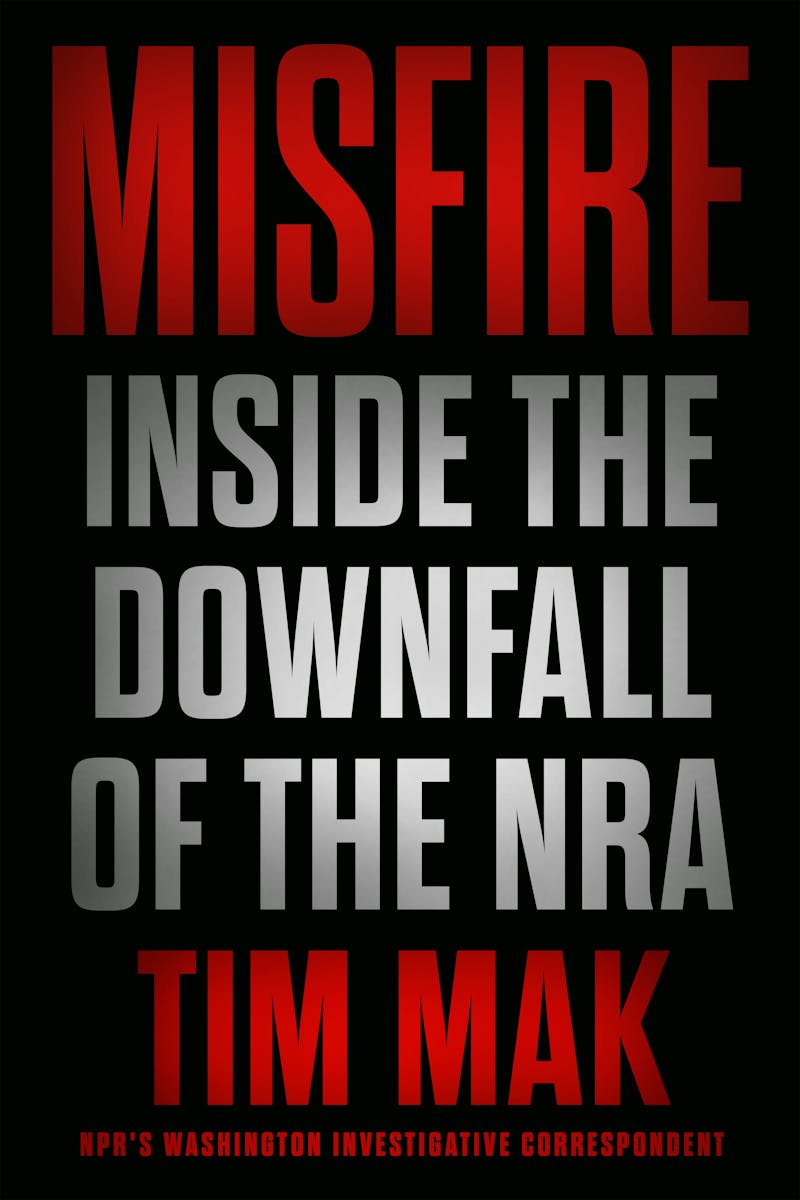
As it adopted this new mission, the gun lobby found itself among the vanguard of the fiercely anti-government forces of the New Right. The movement to reinterpret the Second Amendment to the U.S. Constitution as an all-but-unobstructed license to stockpile weaponry converged with the right-wing crusade to roll back the New Deal welfare state and replace it with a hyper-libertarian politics of cultural confrontation. For the past half-century, the NRA has eagerly cultivated a pseudopopulist image of an armed and angry battery of righteous culture warriors of the right, beating back the faithless onrush of big government liberalism one armed citizen at a time.
But over the same half-century, the group has become a major dispenser and recipient of D.C. money. As its membership rolls and revenues have swollen, the NRA has become one of the premier brokers of power in and around Capitol Hill, rewarding friends and punishing enemies with the brio of a true kingmaker—or tin-pot dictator, as has increasingly been the dominant mode in the NRA’s epically corrupt career.
It’s this gaudy saga that makes up Misfire, Tim Mak’s revealing and lively account of the NRA under the directorship of its CEO and executive vice president, Wayne LaPierre. LaPierre is perhaps best known for his unhinged and belligerent response to the 2012 massacre at Sandy Hook Elementary School in Newtown, Connecticut—when he called to boost the volume of lethal firearms in the nation’s public schools, on the fallacious premise that a contingent of armed police (the “good guy,” in LaPierre’s Wild West rhetoric) should be mobilized to gun down the legion of school shooters enabled by the NRA’s own gun-fundamentalist agenda.
One key revelation in Mak’s exposé is that LaPierre himself is a paper tiger—Mak describes him as a clueless and conflict-averse manager who had been pressed into the role of culture warlord by the longtime marketing and P.R. partner of the NRA, an Oklahoma-based corporate messaging outfit named Ackerman McQueen. The wild and woolly saga in Misfire thus serves as a grimly instructive case study in the mobilization of culture warfare for cash in the precincts of Beltway power—and LaPierre’s unlikely starring role demonstrates that the stunt can be pulled off with the absolute minimum levels of charisma, integrity, and ideological conviction.
The LaPierre era began in 1991. To say he was an unlikely man for the top job at the NRA is a considerable understatement. LaPierre launched his career in Washington as a Democratic lobbyist; he’d fallen into work with the gun lobby back in the 1970s, when it was still focused on lobbying both sides of the partisan aisle, and had turned down a job with then–House Speaker Tip O’Neill to join up with the NRA. LaPierre was also temperamentally ill suited to thunder across the national attention span, demanding ever greater allegiance to the gun culture and the mythos of violent self-assertion that comes with it. He is, Mak writes, “easily bullied and doesn’t have the ability to make firm commitments, or to keep his promises once he makes them.”
Indeed, he shows little affinity for guns qua guns: During his long sojourn atop the gun lobby, “an old joke circulated around NRA HQ: the safest place you could be when Wayne had a gun was between Wayne and the target.” (A far less funny illustration of the same principle surfaced this past spring, in the form of a viral video showing LaPierre and his wife badly botching the killing of an elephant while on safari in Botswana.) NRA wags likewise joked that “you would only be able to make eye contact with [LaPierre] if you lay on the floor while the two of you were talking.”
Even as he got promoted up the ranks of the NRA in the 1980s and 1990s, LaPierre was wracked with indecision and self-doubt. John Aquilino, the NRA staffer who had originally helped to recruit him, reports that when he tried to sell LaPierre on a new gig as head of federal lobbying for the gun lobby, he succumbed to Hamlet-style levels of irresolution. “I’ve talked people out of murder, and this was harder,” Aquilino said, and ultimately only got LaPierre to agree to the promotion by pretending that his hold on the job was suddenly in jeopardy.
LaPierre was indeed very nearly a no-show to his own 1998 wedding to his now-wife Susan. He’d long confided in friends that he didn’t want to get married but nonetheless allowed plans for the ceremony to stay on course, since “he didn’t want to cause trouble.” That, by Mak’s reckoning, is LaPierre’s great comic-tragic character flaw:
Despite being the head of one of the most controversial organizations in America, he is deeply unsettled by personal conflict. This [is] … why he has been prey to so many con men over his decades-long tenure with the National Rifle Association. His friends could only look on in horror as those around him manipulated this simple weakness. His best man did not attend the wedding reception that night.
Indeed, the NRA over the LaPierre years has been a veritable carnival of boodling. LaPierre’s longtime personal assistant and treasurer had both been accused of embezzlement prior to coming on board at the NRA’s suburban Virginia compound (the assistant was convicted; the treasurer’s former employer declined to pursue charges after firing him, thanks to the specter of adverse publicity).
The slovenly business practices that would prove LaPierre’s undoing at the NRA took hold soon after he became CEO in 1991. Like many right-wing fundraising operations, the NRA suffers acute drop-offs in donations any time that the right comes into power in Washington—and so the historic 1994 GOP takeover of Congress produced an acute budget shortfall, at a time when the group was already running up annual eight-figure deficits. When its nonprofit governing board ordered an internal audit in 1996, the auditors found that the NRA had raided $51 million from its long-term investment portfolio and that the total decline in NRA assets under LaPierre totaled more than $85 million. “The NRA … is operating technically as a bankrupt organization,” the audit stated.
In the wake of the report, LaPierre faced a challenge for the CEO position from a reformist board member who had helped uncover the ocean of red ink. Ahead of the board vote, LaPierre instituted a round of staff layoffs and sought to goose up the impression of renewed long-term growth with an offer of discounted lifetime memberships. He narrowly survived the vote. (In another augur of future NRA strong-arm tactics, LaPierre’s allies on the board concocted a phony scheme to bribe LaPierre out of his post—a ploy that LaPierre duly publicized for his own benefit, to shift the onus of corruption onto his accuser; LaPierre would reprise the same maneuver in another NRA power struggle in 2019.)
Where was all the money going? Substantial sums were devoted to pumping up and marketing Wayne LaPierre, the fire-breathing defender of America’s Second Amendment freedoms. In the late ’90s, the brain trust at Ackerman McQueen launched the six-year run of a syndicated two-hour radio platform for the NRA leader, The Wayne LaPierre Show. In 1994, the Ackerman McQueen gurus had ghostwritten a gun-toting broadside for LaPierre—who otherwise, Mak writes, was simply “never certain enough to know what to say”—called Guns, Crime, and Freedom. Thanks to the marketing prowess of Ackerman McQueen—together with an introduction from artillery-happy novelist Tom Clancy—the book rocketed up the New York Times bestseller list, and LaPierre was now ensconced as market-sanctioned merchant of acute right-wing grievance.
LaPierre also became reliant on Ackerman McQueen in the day-to-day running of the organization. During crises or extended P.R. rollouts, LaPierre would consult with the firm’s name partner Angus McQueen “several times a day” and “would not make a single strategic decision without consulting him, as though the ad man were his security blanket,” Mak writes. By 2016, around 100 Ackerman McQueen employees were detailed to the NRA account, coordinating bloated projects such as the infamous NRATV boondoggle, which drew an anemic audience while hemorrhaging cash on a dumbfounding scale. The Ackerman McQueen brass kept any viewership metrics tightly under wraps, but before the NRA finally pulled the plug in 2019, a Comscore report indicated that the network’s website had netted just 49,000 unique visitors over the month of January.
Ackerman McQueen enabled the top-down corruption at the NRA in far more direct fashion, however: Under a bookkeeping setup ominously dubbed “Out of Pocket,” LaPierre would route personal expenses—private plane flights for him and his family members, clothes-shopping binges on Rodeo Drive, European and Caribbean getaways, and the like—into an obliging Ackerman McQueen account, which would arrange for prompt reimbursement to the NRA chieftain without nettlesome details such as receipts or business rationales. The arrangement dated back to LaPierre’s elevation to the executive vice president post—the de facto leadership position in the gun lobby’s Byzantine org chart—and fatefully shaped Ackerman McQueen’s own business model: By 2018, the NRA accounted for 41 percent of the firm’s total revenue.
The ever-burgeoning corps of NRA-affiliated boodlers knew no national boundaries. Mak came to the LaPierre saga via the antics of now-jailed Russian agent Maria Butina, who helped coordinate an NRA junket to Moscow in 2015 and proceeded to arrange stateside confabs between Russian officials, prominent right-wingers, and Trump campaign hands the following year, all while enrolled as a graduate student at American University. Much has been made of Butina’s ties to the Russian intelligence world, but as Mak notes, she was as much as anything a collateral player in the gun lobby’s full-on embrace of Donald Trump and all facets of Trumpworld—a debt-riddled nexus of global boodling in its own right. The NRA was one of the first right-wing power brokers to sign on with the Trump candidacy during the GOP primaries, and duly put its money where its mouth was:
The NRA dedicated more than $50 million to candidates in the 2016 elections, 99 percent of that to Republicans. It was by far the most the NRA had ever spent in an election cycle.… The NRA spent more on boosting Trump’s campaign in 2016 than it did in 2008 and 2012 combined. In fact, the NRA spent $30.3 million on the Trump election effort, more even than the leading Trump super PAC, which spent a paltry $20.3 million.
The group also launched a devastating round of gun-themed attack ads in the general election against Hillary Clinton, right after the damaging release of the Access Hollywood tapes showing Trump bragging of his own history of sexual assault. The release was the group’s largest ad buy of the cycle, at $6.5 million, and it targeted the pivotal battleground states of Nevada, North Carolina, Ohio, Pennsylvania, and Virginia. As Fred Barnes wrote in an election postmortem for the Weekly Standard, “There are many claimants to the honor of having nudged Donald Trump over the top in the presidential election. But the folks with the best case are the National Rifle Association and the consultants who made their TV ads.”
All this frantic spending overlooked the grim fundraising moral of LaPierre’s formative days as the head of the NRA: Once Republicans come into power in Washington, the alarmist culture-war visions of nationwide gun confiscation stop yielding the membership subscriptions and individual donations that fueled the $400 million NRA empire. Whatever skills LaPierre may have honed as a scaremonger and media personality, he clearly neglected to heed the basics of institutional planning, budget strategy, and political self-protection—his actual job, in short.
The reckoning was swift and fierce. The NRA’s revenues in 2017 were $330 million, down from $412 million in 2016; membership dues also plummeted by $36 million. The group had nearly an $18 million deficit—piled atop the $46 million deficit it ran up in 2016.
Faced with a mounting internal crisis, LaPierre enlisted a new right-hand man, who eventually overtook and replaced his longtime contractor-confidant, Angus McQueen. Bill Brewer, a Dallas plaintiffs’ lawyer who voted Democratic and supported gun control, was another unlikely recruit to LaPierre’s inner circle. Charged with enforcing some fiscal discipline within the sprawling NRA empire, Brewer took immediate aim at Ackerman McQueen and the Out of Pocket project. (To add a layer of quasi-Oedipal intrigue to the showdown, Angus McQueen was Brewer’s father-in-law; the two men had long despised each other, and Brewer leapt at this opportunity to torpedo McQueen’s career.) He also set out to soak the NRA with enormous legal fees; over just two years, Brewer’s firm clocked $54 million in legal bills from the gun lobby—at the peak of the power struggle with Ackerman McQueen, Brewer’s firm was logging nearly $100,000 a day in fees from the NRA account. And unlike other hapless NRA contractors, Brewer ensured that he was in fact paid: He drew up an agreement whereby his firm would be first in line for NRA checks, even ahead of the organization’s own payroll obligations to its staff.
The managerial myopia here is nothing short of breathtaking: LaPierre, ever irresolute and conflict averse, chose to address an institutional crisis stoked by bloated contracting arrangements and a self-dealing executive caste by bringing on a yet more expensive outside contractor to wage internecine war with its predecessor and create yet more financial pressures on a cash-hemorrhaging organization in free fall. Brewer warmed to his new role, alarming LaPierre with the specter of imminent audits and legal reckonings. In one NRA meeting, LaPierre blurted out his great fear, according to the sworn testimony of another NRA higher-up: “Bill Brewer’s the only one who can keep me out of jail. He’s the only one between me [and] the guys with the handcuffs, [between] me and an orange jumpsuit.” (LaPierre denies that he said this.)
The growing mood of panic spurred LaPierre to do something inconceivable over most of his tenure: The NRA filed suit against Ackerman McQueen, alleging financial and contractual improprieties. One key sticking point was a deal LaPierre had struck with the Iran-Contra bagman and right-wing media celebrity Oliver North Jr. to assume the presidency of the troubled gun lobby; in order to make up the payday North would be giving up as a Fox News contributor, LaPierre approved a contract for him to go on payroll with Ackerman McQueen—a deal that LaPierre, true to form, subsequently denied ever cutting.
He seized upon the North contract because North himself was stepping outside the normally ceremonial duties of the NRA presidency to raise questions about the organization’s management and financial plight. With Brewer egging him on, LaPierre erected a wildly implausible narrative of his own victimhood at the hands of the cunning North, in line with the operatic culture-war persona he’d cultivated over the past three decades. North was eventually forced out at the NRA’s annual board meeting in 2019 (it speaks volumes about the rampant corruption at the organization that North, of all people, was the voice of institutional reform)—but LaPierre tried to get the last word in the press, in characteristically clueless and self-pitying fashion. Speaking of North’s continual requests for financial records and contract language, LaPierre said, “It was literally, weekly, weekly, weekly, like this waterboarding of me.”
With North’s ouster, the NRA’s meltdown became daily news fodder. A dozen board members of the group who sided with North against LaPierre soon resigned or were denied renomination, and LaPierre fired or forced out longtime NRA hands who had been deemed soft on North and/or Ackerman McQueen. Even the NRA’s Women’s Leadership Forum, the fundraising organization co-chaired by LaPierre’s high-living wife, Susan, suffered a leadership purge. Not surprisingly, the group’s finances kept nosediving: During 2019, membership dues declined from $170 million to $113 million—a 34 percent drop. All the while, LaPierre held onto his $1.9 million salary and his well-traveled NRA credit card.
When New York State Attorney General Letitia James announced that she would seek to dissolve the New York–incorporated gun lobby altogether on the grounds of its extensive violation of nonprofit law, it seemed almost like the NRA had already died. But the group and LaPierre seem destined to see things through to the bitter end. In January 2021, NRA officials initiated bankruptcy proceedings, which had the unfortunate effect of bringing LaPierre and other high-ranking officials into court to testify on how the group’s finances took such a dire turn; the bankruptcy court ultimately denied the group’s Hail Mary ploy to reincorporate in Texas as part of its financial reorganization (which would have allowed it to sidestep James’s New York case against it, expected to go to court next year).
Mak’s account of the NRA’s gothic decline and fall is both crisply narrated and deeply reported—the details of LaPierre’s tenure atop the gun lobby are all but custom-made for the show-don’t-tell school of political reporting. Still, Misfire would have benefited from some wider exploration of the descent of high-powered political networking on the right into flagrant grifting mode. It’s not for nothing, after all, that Paul Erickson, Maria Butina’s much older U.S. boyfriend who assiduously docented her through the corridors of right-wing power in and around Washington, came of political age in the 1980s as a close confederate of jailed and disgraced right-wing superlobbyist Jack Abramoff. Nor is it at all shocking to see Dana Loesch, a onetime NRA flak exiled from her former perch at NRATV, reinventing herself as a talk-radio star and heir apparent to the late Rush Limbaugh as agenda-setter and all-purpose demagogue for the American right. (“Former NRA Spokeswoman Dana Loesch … Doesn’t Care if You Call Her a Murderer,” a recent Washington Post profile gushed.) For the depressing fact of the matter is that regardless of Wayne LaPierre’s ultimate fate, both the NRA and the malevolent hustlers who transformed it into a mighty tributary of D.C. corruption will continue to soldier grimly on.

